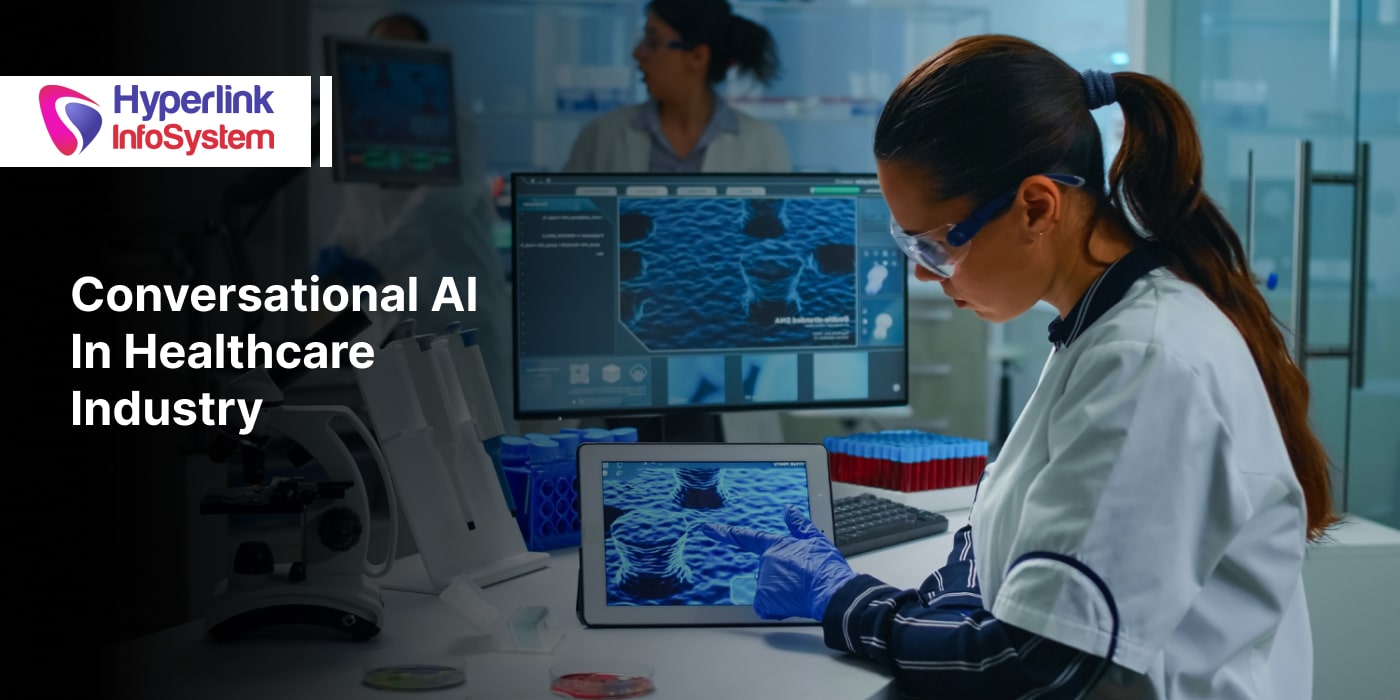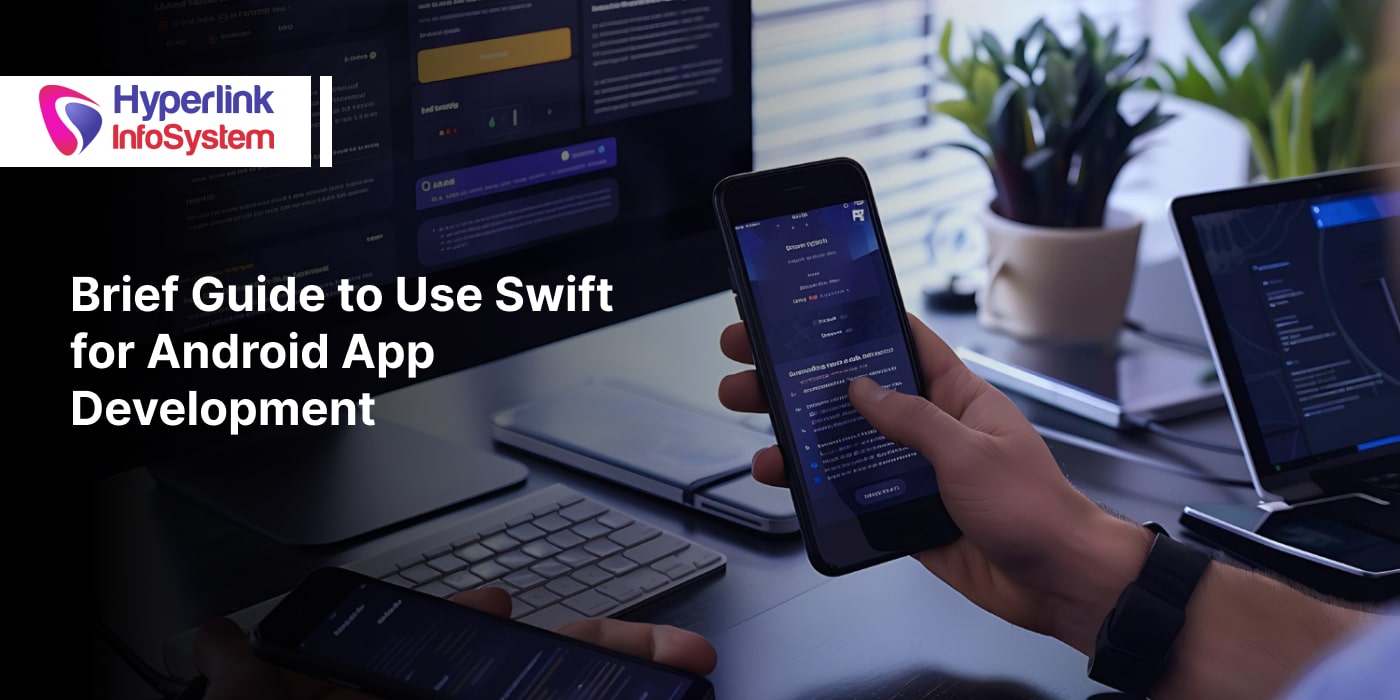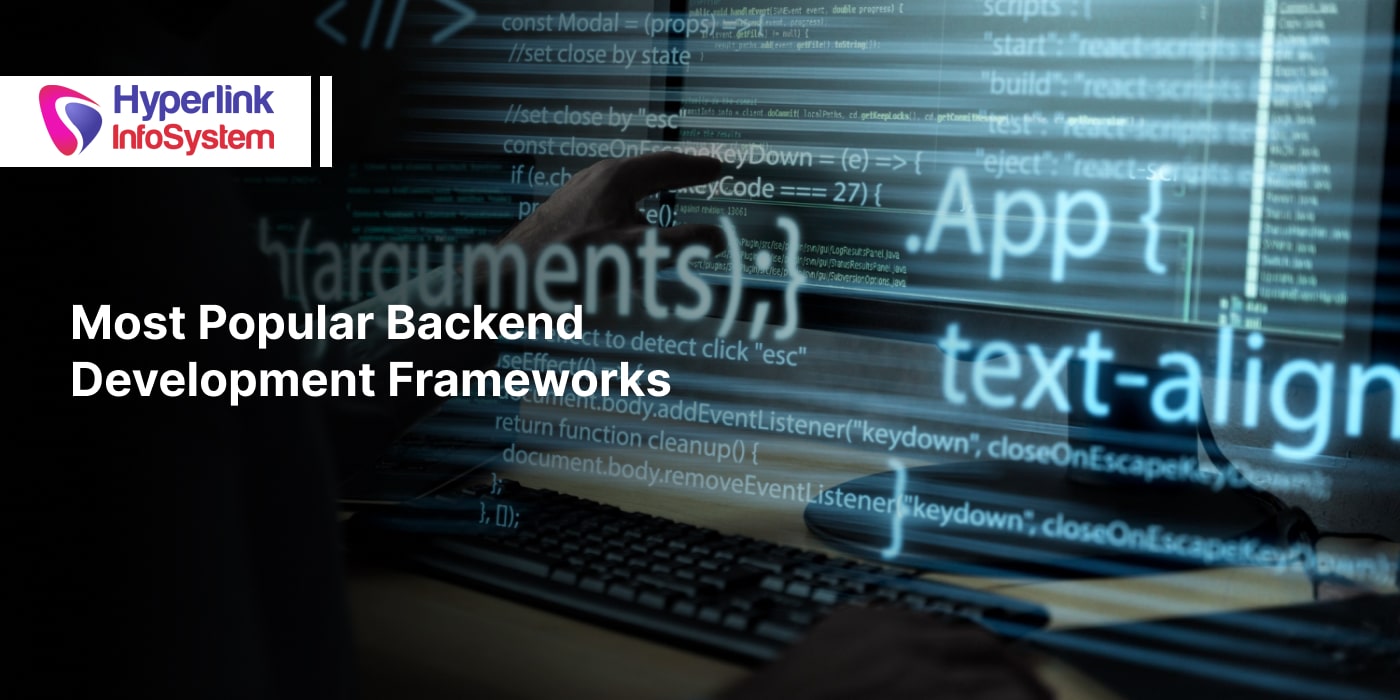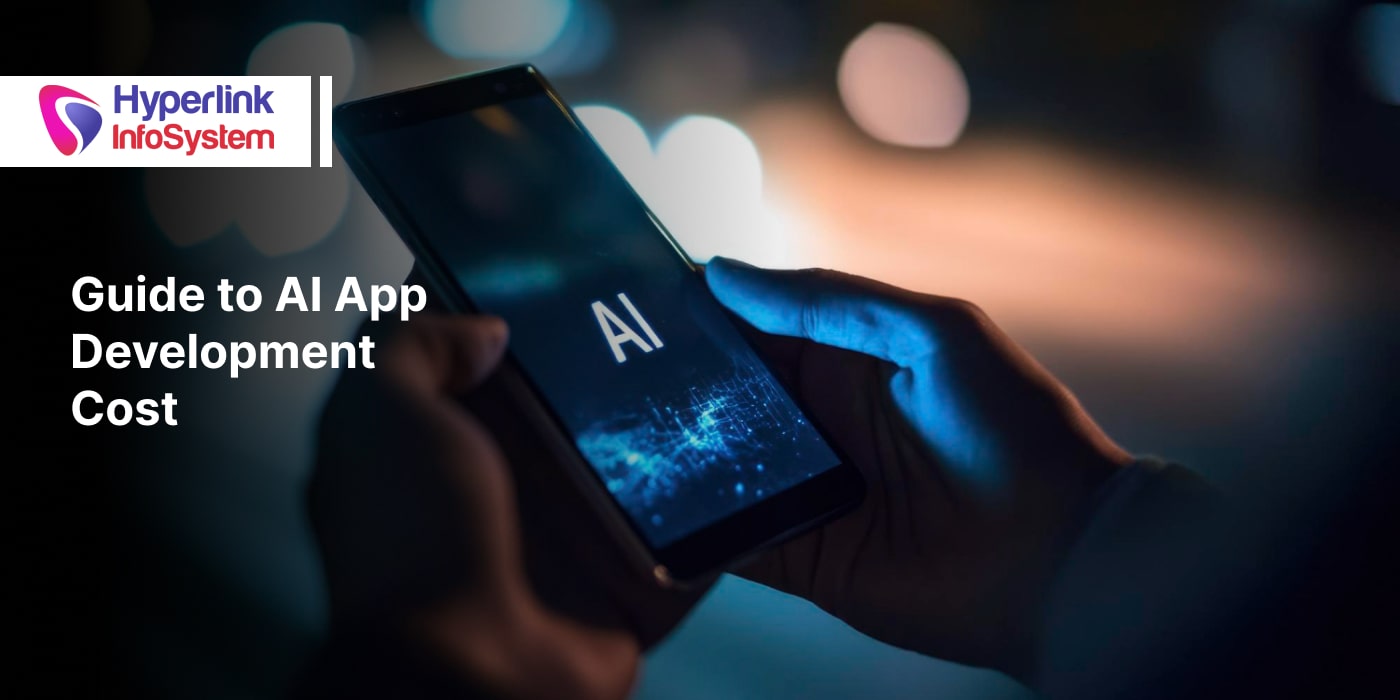AI in Telemedicine - Most Popular Apps, Challenges, Costs
Jul 2025
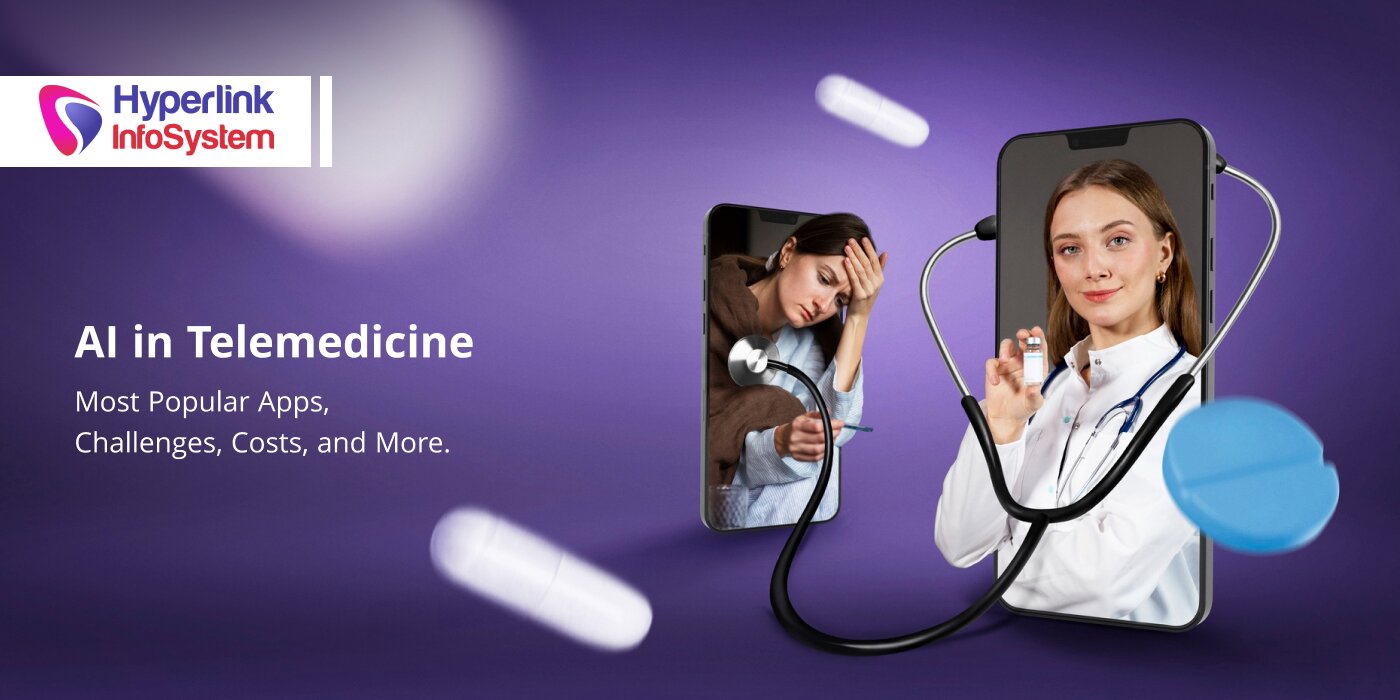
Patients visit the doctor, who suggests medication or administers the right treatment. This has been the norm for decades. The COVID-19 pandemic emerged as a major disruptor in 2019, which made telemedicine more mainstream. Research suggests that the telemedicine market was worth USD 60.48 billion in 2024 and is projected to reach USD 784.95 billion by 2032.
Ever-changing regulatory requirements during the pandemic and healthcare access disparities were the major reasons for the global penetration of telehealth services. However, the entry of AI in telemedicine has completely changed the healthcare landscape. 75% of healthcare organizations have incorporated AI in their operations. 80% of these healthcare institutions reported a considerable drop in staff burnout after AI adoption.
Many healthcare institutions know telemedicine’s benefits but have yet to implement it. Perceived implementation costs, technological limitations, socio-cultural barriers, and lack of knowledge are major deterrents to the global penetration of telehealth. In this blog, we will explore the role of AI in the telemedicine sector, its benefits, challenges, and more. Stay tuned.
What Is Telemedicine?
When someone feels sick or unwell, they visit the doctor’s clinic or the nearby hospital. This is the conventional treatment method, but everything changed after the pandemic. Patients have started speaking to doctors on the phone or through video calls. They discussed their symptoms with the doctor, and he prescribed the appropriate treatment, provided advice, or suggested the next course of action.
There was a 766% spike in the use of telemedicine during the first three months of the pandemic. Has anything changed after the pandemic? Will patients still prefer telehealth services in 2025? The answer is an emphatic yes. 82% of patients prefer telemedicine to manage chronic health issues, while 84% of healthcare professionals endorse it strongly.
Face-to-face or in-clinic consultations still occur, but only if online consultations prove ineffective in addressing the issues.
How Does Telemedicine Work?
Before we jump into the role of AI in the telemedicine sector, let’s understand how telemedicine works.
- Patient books an online appointment with the doctor/expert using an app or website.
- Patient speaks to the doctor in an audio/video call or chat.
- Detailed description of the problem (by the patient).
- Doctor checks the symptoms and then may perform the following actions (based on his observation and knowledge).
- Suggests home remedies.
- Writes a digital prescription.
- Recommends tests
- Insist on a visit if necessary.
10 Powerful Applications of AI in Telemedicine in 2025
The market size of AI in telemedicine is expected to grow by USD 31.4 billion (CAGR of 25%) between 2024 and 2029. Using cutting-edge tools and technologies like smartphones, messenger apps, cameras, biosensors, smart body implements, and more, healthcare organizations provide telehealth solutions to patients. It helps them provide timely and convenient care to patients while saving time and effort.
Below are some powerful applications of AI in telemedicine that are creating a stir in 2025 and will remain relevant for some more years.
1) AI-Powered Symptom Checkers
Most people know they are ill but can’t pinpoint the cause. Also, as humans, we may ignore some key indicators and mistake them for something else. AI chatbots in healthcare are a blessing in 2025 because they use artificial intelligence, machine learning, and natural language processing to understand the symptoms and provide valuable health-related guidance.
Patients may not be familiar with medical jargon and symptoms associated with diseases. However, the AI and ML models in telemedicine software are trained to get the information from patients. Patients need not do much.
All they have to do is interact with the symptom checker like they would with a friend. By providing it with the necessary information, it can suggest whether to visit a doctor, reach out to emergency services, or try some home treatments.
How Do AI Healthcare Chatbots Work?
Below is an explanation of how AI-powered symptom checkers work.
- Data Input - Users’ input details related to symptoms, duration, severity of the condition, and other personal info.
- AI Analysis - AI models compare inputs with medical data to determine the possible causes.
- Generates Results - The tools outline the possible conditions, risk levels, and next course of action.
- Learning Loop - System becomes more accurate over time by learning from user feedback and outcomes.
Key Use Cases of AI Healthcare Chatbots
The key use cases of AI-powered symptom checkers are as follows:
- Symptom Check and Preliminary Diagnosis - AI takes a look at the current symptoms, suggests possible conditions, and recommends what to do next, whether that is self-care or seeking emergency treatment.
- Medication Management - Reminds patients to take their medications, checks for any interactions, and monitors if they follow the doctor’s instructions.
- Mental Health Check-Ins - System monitors behavior and daily mood, guides you through mindfulness exercises, and connects you to a counselor if the situation demands it.
- Appointment Booking & Follow-Ups - Handles scheduling, sends reminders, and prepares documents for medical appointments.
- Post-Treatment Support - Assists patients through recovery tasks and routine routines after treatment.
- Insurance and Billing Support - Answer questions and queries about coverage, help with claim submissions, and billing issues, if any.
Problems AI-Symptom Checkers Solve
Below are the problems that AI-powered symptom checkers solve.
- Limited Access to Healthcare Professionals - Serve as the first point of contact in areas with fewer doctors.
- Patient Overload - AI-powered chatbots reduce patient overload in clinics. It filters patients based on the situation’s urgency.
- Reduces Repetitive Tasks - By automating scheduling, reminders, and follow-ups, employees can save time, and redirect their focus towards other tasks.
- Poor Medication Adherence - With timely reminders and effective medication tracking, healthcare institutions can improve compliance and outcomes.
- Language Barriers - Multilingual support ensures patients from diverse backgrounds can easily access the medical care they require.
- Mental Health Gaps - Provides immediate, unbiased support and ensures users manage health conditions without stigma.
2) AI-Enabled Diagnostics in Imaging
One of the standout advancements in telemedicine, thanks to AI in telemedicine, is its ability to perform detailed analysis of medical images. It can evaluate X-rays, CT scans, and ultrasound images with incredible accuracy and precision. Sometimes, it even surpasses the skills of human medical experts. What is so special about the technology? How do they work? Let’s explore more.
How Does AI-Enabled Imaging Diagnostics Work?
AI-powered imaging diagnostics work in the following ways-
- Trained on Millions of Images - AI models undergo extensive training on mastiff datasets of labeled images. Over time, they learn to detect patterns that humans may miss due to oversight.
- Pattern Recognition - The systems are designed to detect irregularities such as tumors, fractures, blockages, or infections. They also excel at assessing size, shape, and texture, which play a dominant role in monitoring disease progression.
- Real-Time Analysis - AI tools analyze images quickly and with great accuracy, providing a second image.
Key Use Cases of AI-Enabled Imaging Diagnostics
Below are some key uses of AI-enabled imaging diagnostics.
- Lung Disease Detection - Spots early signs of ailments like pneumonia, tuberculosis, or lung cancer by examining X-rays. AI does it even before symptoms appear in patients.
- Breast Cancer Screening - AI-enhanced mammography tools are making a big difference. By reducing false positives and identifying tumors sooner, AI tools enable informed decisions about patients' treatment options.
- Stroke Diagnosis - Detecting strokes early on can save lives. AI enables emergency teams to detect blockages or bleeding in the brain through scans.
- Orthopedic Injuries - Quick detection of ligament tears in bones and joints is possible with AI. Emergency care and sports clinics benefit from it immensely.
- Eye-Disease Monitoring - AI scans retinal images to detect cases of diabetic retinopathy and glaucoma before they cause significant damage. It is changing the face of tele-opthalmology.
Problems that AI-Enabled Imaging Diagnostics Solves
Below are the key problems that AI-enabled imaging diagnostics solve.
- Shortage of Radiologists - Offers instant support in locations where imaging experts are scarce or unavailable.
- Diagnosis Delays - Speeds up image review, reducing wait times.
- Human Error - Maintains accuracy without fatigue or distraction.
- High Costs - Scalable AI tools reduce infrastructure and consultation expenses.
- Inconsistent Quality - Ensures uniform diagnostic standards everywhere.
3) Mental Health Support
The mental healthcare landscape has undergone a drastic change, thanks to AI. Equipped with an extensive toolkit for diagnosis, treatment, and support, patients can expect to see better results. Whether facing depression, anxiety, or stress, the AI tool recognizes signs based on voice, text, or behavior.
How Does AI-Powered Mental Health Support Work?
AI-enabled mental healthcare works in the following ways:
- Natural Language Processing (NLP) - AI tools analyze a person’s speech and writing patterns. This includes the choice of words, tone, typing speed, and how they form sentences. It picks up minute clues like hesitation or the repeated use of negative words.
- Sentiment & Emotional Analysis - Detects emotions such as sadness, anger, and anxiety by analyzing writing patterns or even voice and facial expressions. Even if the person does not express their feelings, the AI tool understands emotions.
- Behavioral Pattern Recognition - AI tracks every action that a person performs on the app, like the frequency of using the app, performing exercises, or a sudden drop in activity. This unexpected behavior can be an indication of emotional trauma or a person’s withdrawal.
- Wearables Integration - Wearable devices like smartwatches and fitness trackers provide AI with valuable insights. Real-time data related to heart rate, sleep quality, and intensity level of activities can tell a lot about the patient’s mental and physical condition.
Use Cases of AI-Powered Mental Health Support
Below are the use cases of AI-Powered Mental Health Support.
- Early Disorder Detection - Screens users for signs of depression, anxiety, PTSD, and even schizophrenia. Early detection in teens and young adults ensures they get treatment before things get worse.
- Virtual Therapy Assistants - Acting as first responders for mental health, AI chatbots are available 24/7. It supports users with journaling prompts, breathing exercises, and CBT-related exercises.
- Personalized Mental Health Plans - The AI tool tailors treatment suggestions based on user behavior and mental health conditions. They may also recommend custom treatments such as guided meditation, digital detoxes, or sleep routines, all of which evolve as the patient’s needs change.
- Support Between Therapy Sessions - Many patients require guidance in between their therapy sessions. AI can step in here by monitoring moods, enabling the creation of coping strategies, and sharing valuable insights with the therapist to boost the effectiveness of each session.
- Crisis Detection and Intervention - AI can spot early warning signs of self-harm, suicidal thoughts, or panic attacks. If necessary, it can alert relatives, doctors, or helplines, ensuring that help is on the way. This proactive method has the potential to save countless lives.
Problems that AI-Powered Mental Health Support Solves
Below are the key problems that AI-powered mental health support solves.
- Access Barriers - AI offers a low-cost, stigma-free way to start seeking help.
- Shortage of Professionals - When enough therapists are not available in a particular location, AI can step in to fill those gaps and provide support.
- Delayed Diagnosis - Identifies early signs of mental health issues by picking up on subtle hints.
- Inconsistent Support - Offers non-stop mental health support, available every day, 24/7/365.
- Emotional Isolation - Delivers companionship whenever needed, helping to alleviate feelings of loneliness.
4) Faster Disease Detection
Thanks to AI, disease detection is evolving to be faster, smarter, and remote. By collecting data from a myriad of data sources and integrating it with machine learning algorithms, healthcare professionals can detect problems without delay. In many cases, they identify the disease even before the symptoms manifest in patients.
How Does AI-Powered Disease Detection Work?
AI-driven disease detection works in the following ways-
- Data Gathering - AI gathers data from multiple sources like wearables, EHR records, medical imaging, laboratory results, and disease-related symptom reports generated by health apps.
- Pattern Recognition - Great at picking up on subtle changes/patterns that may indicate the nascent stages of a disease. For instance, it can spot things like cysts, pus, or unusual discharge around the genital area that could point to sexually transmitted diseases.
- Real-Time Analysis - Waiting hours or days for lab results or clinic appointments can be excruciating for patients. With AI-powered systems, data is continuously monitored and analyzed, providing real-time alerts when something needs attention.
- Risk Scoring - By evaluating the patient’s information, AI can assign risk levels and flag potential concerns. This allows healthcare providers to focus on patients who need immediate care.
Use Cases of AI-Enabled Disease Detection
Below are some of the use cases of AI-enabled disease detection.
- Diabetes - The combined might of continuous glucose monitors and AI can accurately predict blood sugar fluctuations. By receiving early warnings about insulin resistance, patients have the opportunity to tweak their diets and make lifestyle changes that can lead to a better quality of life.
- Cardiovascular Disease - Collects data from ECG to identify arrhythmias, high blood pressure, or potential signs of heart attack, seizure, and stroke.
- Cancer Detection - Thorough examination of mammograms, skin lesions, and changes in voice can help catch certain types of cancer, like breast, skin, and throat, in their early stages.
- Chronic Breathing Problems - Evaluates breathing sounds and coughing patterns to identify asthma, COPD, or even early indications of lung issues.
- Mental Health Issues - Detects subtle shifts in speech, behavior, or daily habits that are collected through telehealth sessions or device interactions. Furthermore, AI processes them to detect risks of anxiety, depression, and other mental health issues.
Problems that AI-Enabled Disease Detection Solves
Below are the problems that AI-enabled disease detection addresses.
- Delayed Diagnosis - From noticing symptoms to completing diagnosis, AI minimizes the duration greatly. This is a blessing for patients unable to visit clinics in far to reach areas.
- Overburdened Healthcare Systems - Filters high-risk cases proactively, helping doctors focus on patients requiring immediate care. Also, AI optimizes telemedicine workflows.
- Minimizes Human Errors - AI detects symptoms that experts might miss. It constantly learns and adapts while updating its database from millions of real-world cases.
- Access Inequality - Allows patients in rural areas or from underprivileged communities to avail of high-quality diagnostic insights without incurring travel costs.
5) AI-Driven Tele-Rehabilitation
Travel and visiting clinics can be a formidable challenge for patients who have endured painful surgeries, are coping with chronic injuries, or are facing neurological issues. But with the introduction of AI in tele-rehabilitation, recovery has become more accessible, tailored, and consistent for these individuals. The best part? They can do it all from the comfort of their homes.
How Does AI-Powered Tele-Rehabilitation Work?
Below is a simple explanation of how AI-driven tele-rehabilitation works.
- Motion Tracking Technology - By utilizing smartphones, tablet cameras, depth sensors, or wearable devices, AI tools keep an eye on body movements in real-time. They can detect even the tiniest shifts in posture, joint angles, balance, and the way a body part moves.
- Real-Time Feedback - Provides real-time feedback to patients through audio or visual cues, guiding them to perform exercises or stretches more effectively, much like a therapist would.
- Progress Monitoring and Adaptation - Keeps tabs on daily progress while spotting improvements or setbacks. Based on this observation, AI adjusts the exercises, tweaking the intensity and complexity to match the patient’s ability and physical condition.
- Gamified Rehab - Turns exercises into engaging games, making the process more enjoyable and boosting patient motivation. By unlocking rewards or earning points, patients will be more inspired to stick to their required exercises.
Use Cases of AI-Powered Tele-Rehabilitation
Below are some of the use cases of AI-enabled tele-rehabilitation.
- Post-Surgery Recovery - Rehabilitation apps powered by AI are there to help patients stay on track with their exercise routines following orthopedic surgeries. Besides optimal healing, the AI apps reduce the need for regular clinic visits.
- Stroke Rehabilitation - Guided limb movements, balance training, and coordination exercises can help patients regain their lost motor skills. AI makes this possible, plus it tracks small improvements that humans may ignore.
- Sports Injury Management - AI-guided therapy can be a blessing for athletes recovering from quad and ACL tears, rotator cuff injuries, or fractures sustained during practice or tournaments.
- Elderly Care - AI Rehab is ideal for individuals over the age of 60 recovering from injuries, fractures, or surgeries. It promotes recovery in a safe and familiar environment while monitoring risk and progress.
Problems Solved by AI-Powered Tele-Rehabilitation
Below are some problems that AI-powered tele-rehab solves.
- Limited Access to Physical Therapy - AI tools address the lack of trained medical professionals in rural areas. It ensures that patients get remote and adequate care.
- High Therapy Costs - Repeated clinical visits can be expensive and time-consuming. AI-powered rehab reduces costs while providing optimal support.
- Erratic Exercise Schedules - Patients tend to slack, forget, or postpone their recovery exercises. Not only does AI supervise these sessions, but it also corrects form and holds patients accountable.
- Low Patient Motivation - Real-time feedback and gamification powered by AI can shake up dull exercise routines, motivating patients to push themselves and improve with every session.
6) Personalized Treatment Plans
Generic treatment and exercise routines are a thing of the past. With AI advancements in the telemedicine sphere, patients can benefit from hyperpersonalization of treatment plans using AI. Gaining a thorough understanding of the patient’s medical history, symptoms, and ailments, AI generates a specific treatment plan. Patients can avail of all these benefits without visiting the clinic.
How Do AI-Generated Custom Treatment Plans Work?
AI tools gather data from multiple sources, including the following-
- Electronic Health Records (EHRs) - Store vital data about the patient’s medical history, including past illnesses, surgeries, allergies, and medications.
- Genomic Data - If this data is available, AI uses it to analyze DNA and identify a person’s likelihood or probability of developing certain diseases.
- Lifestyle Inputs - Keeps an eye on sleep patterns, physical activity, and eating habits.
- Real-Time Wearable Data - Offers insights into heart rate, glucose levels, blood pressure, and oxygen saturation.
- Patient Feedback - Ongoing updates from patients accumulated from apps or voice inputs.
Use Cases of AI-Powered Personalized Treatment Plans
Below are the use cases of AI-powered personalized treatment plans.
- Chronic Disease Management - Develop a custom treatment plan for patients battling ailments like hypertension or diabetes. The plan includes individualized diet advice, workout routines, and stress management tips, all of which can be modified in real-time.
- Post-Surgery Recovery - Enables remote tracking of patient healing through patient inputs and wearable data. Depending on the inputs, AI modifies exercises, intensity, and raises a warning if it detects dangerous signs.
- Mental Health Therapy - By keeping track of patients’ mood and behavior, AI can suggest therapy techniques, adjust exercise frequencies, and recommend mindfulness activities that cater to each person’s emotional needs.
- Cancer Care - Considers the specific type of cancer that a patient has, how they respond to treatment, and their genetic profile to tailor medication and dietary plans for the best recovery outcomes. Remote specialists remain in the loop during the entire process.
Problems Solved by AI-Powered Personalized Treatment Plans
AI-powered personalized treatment plans solve the following problems for patients and healthcare institutions.
- No Undivided Attention - Doctors and healthcare specialists may not provide specialized care. AI addresses this issue with consistent, personalized care.
- Static Treatment Plans - In most cases, treatment plans don’t change unless the patient visits the doctor. With continuous AI monitoring, the treatment plans change according to the patient’s condition.
- Missed Symptoms - By detecting subtle changes in data patterns, AI highlights underlying issues or potential risks. This ensures proactive intervention and treatment.
- Health Literacy Barriers - Takes the confusion out of medical jargon, presenting information clearly and engagingly through audio and video. Plus, it provides actionable steps to help them navigate their care.
7) Predictive Analysis for Preventive Care
With AI in telemedicine, treatment does not have to start after the illness starts attacking the human body. It predicts the illness beforehand. Machine learning, big data, and predictive analytics form a dynamic trio that is revolutionizing the world of modern telemedicine.
How Does Predictive Analysis for Preventive Care Work?
Predictive analysis in preventive care works in the following ways-
- Data Collection - Involves collecting data from electronic health records (EHRs), wearable tech, lab reports, lifestyle inputs, and non-medical elements that can impact health.
- Pattern Recognition - Algorithms dive into this data to identify patterns or red flags such as palpitations, a spike in heart rate, or sudden shifts in blood sugar levels.
- Risk Scoring - From these patterns, patients are given risk scores for conditions such as diabetes, hypertension, heart ailments, and more.
- Alerts and Recommendations - Upon detecting a risk, the AI system sends an alert to both the patient and healthcare provider right away. It can also suggest clinic visits, lifestyle changes, or lab tests, often before the disease becomes a matter of concern.
Use Cases of Predictive Analysis for Preventive Care
Below are some of the use cases of AI-powered predictive analysis for preventive care
- Preventing Chronic Diseases - This approach helps catch early signs of ailments such as kidney issues or heart disease, making sure patients get timely teleconsultations and preventive care when they need it the most.
- Mental Health Forecasting - By analyzing digital behavior and health data, AI can predict potential mental health issues before they become serious. Telemedicine platforms can jump into providing timely support.
- Elderly Care Monitoring - AI anticipates risks such as falls or cognitive decline in older people while ensuring optimal remote care via telemedicine.
- Hospital Readmission Reduction - Pinpoints patients who have been released from the hospital, but may need ongoing care, or could see their condition decline. AI flags such cases for remote monitoring and follow-up.
- Population Health Management - AI identifies high-risk populations and regions. Healthcare organizations can conduct healthcare campaigns and ensure proactive telehealth deployment.
Problems Solved by AI-Powered Predictive Analysis
Below are some problems that AI-powered predictive analysis solves.
- Late Diagnosis - Predictive analytics in AI detects chronic diseases before it's too late.
- Reactive Healthcare - Compels the system to act before the illness takes form, rather than start treatment after the condition worsens.
- Resource Strain - Prioritizes high-risk patients for teleconsultation, saving time and effort.
- High Costs - Proactive treatment means fewer hospital visits, surgeries, and lengthy treatments.
- Patient Inertia - Custom risk notifications encourage individuals to take the necessary steps to improve things before it turns into an illness.
8) Remote Monitoring and Management
Chronic conditions require constant monitoring and care. In the past, patients had to either visit clinics or pay for doctors to come to their residences, which could add up in both time and money. But now, with AI-enabled remote monitoring and management, patients can stay right at home and get the care they need. At the same time, healthcare professionals can save time and treat more patients.
How Does AI Remote Monitoring and Management Work?
AI-powered remote monitoring and management work in the following ways-
- Connected Devices - AI is always on the job, collecting data from smart wearables, including smartwatches, glucose monitors, and blood pressure cuffs.
- Real-Time Data Analysis - AI dives into the data, spotting trends, patterns, or any red flags, such as irregular heartbeats, sudden blood sugar spikes, and breathing troubles.
- Instant Alerts - If the system picks up anything suspicious, it sends out alerts to family members, caregivers, or healthcare professionals. This means they can jump into action with timely teleconsultations, medication adjustments, or even emergency services.
- Data Integration - AI seamlessly connects device data with EHRs, giving doctors a 360-degree picture of the patient’s health.
Use Cases of Remote Monitoring and Management
Here are some of the most common ways remote monitoring and management are used.
- Cardiac Care - AI tracks heart rate, oxygen levels, and ECG data through wearables. It can detect early signs of atrial fibrillation or heart failure even before symptoms show up.
- Diabetes Management - AI-powered glucose monitors keep a constant eye on glucose levels, predicting dangerous spikes and suggesting real-time medication adjustments.
- Post-Surgery Recovery - Post-surgery, the AI system keeps tabs on healing and vital signs, reducing the need for regular clinic visits.
- Elderly Care - For seniors living alone, AI can be a lifesaver. It monitors body movements, sleep patterns, hydration, and medication adherence. In case of emergency, it alerts caregivers or relatives.
- Pulmonary Conditions - For those with asthma and COPD, AI proactively identifies breathing issues and adjusts treatment plans as needed.
Problems Solved by AI-Powered Predictive Analysis
The following are the problems that AI-powered predictive analysis solves.
- Reduces Hospital Readmissions - Chronic conditions can become worse without warning. AI spots warning signs early, reducing the need for emergency visits or lengthy hospital stays.
- Bridging the Rural Care Gap - Ensures patients in rural areas get the same level of continuous monitoring as those in urban locations.
- Empowers Patients - Empowers patients by providing personalized insights and actionable feedback, making patients active participants in their telehealth experience.
- Reduces Doctor Workload - AI’s data filtration capabilities ensure it discards unnecessary data, allowing healthcare providers to focus on critical cases rather than waste time on trivial issues.
- Supports Preventive Care - Discards the reactive approach to health issues. Patients can predict issues and address them with AI-powered forecasting.
9) AI-Powered Virtual Triage
Before patients even step into a doctor’s clinic, they are guided by an AI-powered virtual triage that guides them. These smart systems ask all the right questions, assess symptoms, and prioritize cases based on their severity. This ensures that medical issues are evaluated quickly and efficiently.
How Does AI-Powered Virtual Triage Work?
AI-powered virtual triage works in the following ways-
- Symptom Checkers - Patients talk to a chatbot or virtual interface and share their problems, including symptoms. The AI-powered chatbot uses natural language to converse with patients like a nurse would at a hospital.
- Medical Knowledge Base - System uses the latest clinical data, medical textbooks, and real-world cases to identify what is derailing things.
- Real-Time Health Integration - Many triage systems integrate with smartwatches, glucose monitors, or digital thermometers to collect live health data.
- Risk Assessment Engine - Based on the symptoms, disease history, age, vitals, and other factors, the AI tool determines the urgency.
- Post Assessment - After assessing the situation, the system recommends a further course of action. It could be self-care, teleconsultation, or immediate urgency.
Key Use Cases of AI-Powered Virtual Triage
Below are the key use cases of AI-powered virtual triage.
- Emergency Room Prioritization - AI triage sorts cases and prioritizes critical cases like seizures or chest pain. Cases with less severe symptoms will be made to wait.
- Remote Clinics - In places with fewer medical professionals, AI triage can be accessed through smartphones or kiosks to screen patients, reducing travel time.
- Insurance Helplines - AI triage can reduce the burden on call center employees, as the most severe cases will get top priority.
- Corporate Wellness Programs - Triage systems at workplaces allow employees to enter their symptoms, resulting in personalized advice. This reduces sick leave and clinic visits.
Problems Solved by AI-Powered Virtual Triage
Below are the problems that AI-powered virtual triage solves.
- Overburdened Healthcare - Sorts urgent cases from the ones that can wait, allowing doctors to focus on the most urgent tasks.
- Time Delays - Patients don’t have to wait endlessly to find out about their health conditions. They get a diagnosis within minutes.
- Human Errors - Nurses and doctors can sometimes overlook certain symptoms because of their heavy workloads or sheer exhaustion. On the other hand, AI does not experience fatigue, which means it can provide consistent and data-driven performance every time.
- Access Gap - AI-powered triage is often the only way to provide lightning-fast healthcare advice and service in rural settings.
- High Healthcare Costs - Directing patients to the most appropriate care setting helps them avoid experiencing ER visits or undergoing tests costing a fortune.
10) TeleSurgery and Robotic Assistance
Performing complex surgeries in remote locations is always a challenge. With AI, doctors and other specialists can perform or assist in performing complex procedures. Telesurgery leverages robotic systems and high-speed internet to complete the project. Doctors don’t have to visit places thousands of kilometres away.
How Does Telesurgery and Robotic Assistance Work?
Telesurgery and robotic assistance work in the following ways-
- Remote-Controlled Surgical Robots - Think of the robots as an extension of the surgeon’s hands. They mimic the surgeon’s movements and carry out the procedure with precision, often surpassing human performance.
- AI Assistance During Surgery - AI-enabled systems guide the surgeon in real-time by analyzing video feeds and sensor data. It reveals vital parts, recommends the next steps, and alerts specialists about potential complications.
- 5G and Low-Latency Networks - Ultra-fast internet ensures that the procedure happens in real-time, ensuring zero delays and eliminating risks.
Key Use Cases for Telesurgery and Robotic Assistance
Below are some key uses of telesurgery and robotic assistance-
- Rural and Remote Areas - Patients in remote/rural areas can avail of top-notch surgical facilities without traveling long distances. This saves time, money, and cuts risks.
- Disaster Zones or Wars - AI-enabled telesurgery can be a lifesaver during natural disasters or wars. Local medics can perform surgeries with AI’s guidance.
- Space and Underwater Missions - Advanced AI robots can guide space and deep-sea exploration teams from Earth. This ensures safety and accuracy while limiting costs.
- Training and Supervision - Allows senior surgeons and specialists to mentor juniors. Experts can intervene at any stage while juniors navigate the technicalities in real-time.
Problems Solved by Telesurgery and Robotic Assistance
Below are some problems that telesurgery and robotic assistance solve for medical professionals and patients.
- Lack of Specialists - Thanks to AI-enabled telesurgery, skilled surgeons and medical specialists can oversee critical procedures in the most remote locations.
- Delayed Emergencies - With remote surgeries, patients who require urgent care or are facing life-threatening conditions can receive timely assistance without delay.
- Fatigue and Errors - AI does not tire like humans and rarely does it make mistakes. It assists medical professionals and helps them perform procedures with precision.
- Travel Barriers - Enables underprivileged patients to receive world-class care without compelling them to travel long distances. It brings experts to where people need them.
11) Administrative Automation and Workflow Efficiency
Doctors and other medical professionals can handle on-ground activities and emergencies with AI, but what about back-end operations? Absolutely, AI can lend a helping hand with that. It is effective at automating tasks like scheduling, billing, insurance claims, and medical transcriptions.
Other repetitive and mundane tasks that AI automates include organizing patient records and updating documents. By automating such tasks, healthcare institutions can reduce errors, save valuable time, and allow healthcare professionals to focus on other productive tasks.
How Does AI-Powered Administrative Automation Work?
AI-powered administrative automation works in the following ways-
- Natural Language Processing - Helps AI grasp and convert doctor-patient conversations into medical notes with relative ease.
- Machine Learning Algorithms - Learns patterns related to scheduling, insurance codes, and billing data, which results in quicker, more precise, and informed decision-making.
- Robotic Process Automation (RPA) - Handles repetitive tasks like data entry, sending reminders, or verifying documents without the need for human touch.
- Using multiple technologies like NLP, ML, and automation tools, AI effortlessly handles repetitive tasks. Integrating the above systems and technologies into EHR platforms or telemedicine apps allows healthcare companies of all sizes to leverage them for their operations.
Use Cases of AI-Powered Administrative Automation
Below are some of the use cases of AI-powered administrative automation.
- Automated Appointment Scheduling - AI seamlessly matches doctors’ availability with patient preferences, sending out timely confirmations and reminders that keep everyone on track.
- Smart Billing and Coding - With great efficiency, AI selects the correct billing codes and flags any missing or incorrect data in real-time, ensuring accuracy.
- Insurance Claim Processing - AI verifies patient data, checks their coverage, submits claims, and even spots potential errors or fraud along the way.
- Medical Transcription and Note-Taking - AI handles the task of transcribing teleconsultations into clear notes and summaries for doctors to review.
- Patient Record Management - Keeps health records organized, updated, and accessible in real-time, no matter the format.
Problems that AI-Powered Administrative Automation Solves
Below are some problems that AI-powered administrative automation solves.
- Administrative Overload - Cuts down on the time spent on paperwork, allowing doctors to dedicate themselves to patient treatment and welfare.
- Human Errors - Minimizes mistakes in billing, scheduling, and documentation.
- Delayed Payments - Speeds up claims processing, leading to faster reimbursements.
- Fragmented Patient Data - Brings together scattered health records, providing seamless access to all.
- Poor Patient Experiences - Streamlines processes, enhancing clarity and satisfaction.
AI Integration Challenges that Healthcare Companies Face
Below are the most common challenges that healthcare companies face while incorporating AI in telemedicine.
|
Challenge |
Solution |
|
Data privacy and security concerns while handling sensitive patient information |
Implement robust encryption, ensure compliance with HIPAA/GDPR, and conduct regular security audits. |
|
Limited interoperability with existing healthcare systems |
Use standardized APIs and FHIR protocols to ensure seamless integration. |
|
Resistance from healthcare professionals due to a lack of trust or training |
Provide hands-on training, clear AI explanations, and involve clinicians during development. |
|
Inconsistent data quality and siloed patient records |
Use AI to clean, standardize, and consolidate health data from multiple sources. |
|
High implementation costs for advanced AI systems |
Start with scalable, modular AI tools and use cloud-based solutions. |
|
Regulatory and legal uncertainties around AI diagnostics |
Collaborate with regulators and adopt AI tools with certified clinical validation. |
|
Ethical concerns about AI decision-making in patient care |
Ensure human oversight and transparent AI decision processes. |
|
Connectivity issues in rural or remote areas |
Deploy low-bandwidth AI solutions and leverage offline-first telemedicine models. |
Incorporating AI in healthcare can be complicated, but with the right strategy and guidance, it brings great benefits. The trick lies in focusing on data quality early on and investing in staff training. When employees know what to do, it makes operations smooth and stress-free.
Costs of Integrating AI in Telemedicine
Below is an approximate cost breakdown of integrating AI in telemedicine.
|
Category |
Estimated Cost (USD) |
Description |
|
AI Software Licenses |
$25,000 – $150,000/year |
For commercial AI platforms (examples include symptom checkers, diagnostic tools, chatbots, and transcription) |
|
Custom AI Development |
$80,000 – $500,000+ (one-time) |
to develop tailored AI models, integrating with EHRs, or training NLP/vision systems |
|
Cloud Infrastructure |
$1,000 – $10,000/month |
Cost of running AI services on AWS, Azure, or Google Cloud (depending on usage) |
|
Integration with EHR/EMR |
$20,000 – $100,000 (one-time) |
Custom APIs, middleware, or HL7/FHIR interface development |
|
Hardware Upgrades |
$5,000 – $50,000+ (one-time) |
For AI-ready servers, GPUs, edge devices, or compatible medical IoT devices |
|
Data Security & Compliance |
$10,000 – $75,000/year |
HIPAA/GDPR compliance tools, audit systems, encryption services, and cybersecurity |
|
Staff Training & Onboarding |
$5,000 – $30,000/year |
AI literacy programs, software usage training, and workflow adaptation |
|
Patient-Facing App Integration |
$15,000 – $75,000 (one-time) |
Adding AI features to mobile/web apps (like chatbots, voice assistants) |
|
Regulatory Certification (AI/ML) |
$20,000 – $200,000+ (as required) |
FDA/CE certification for diagnostic AI tools (especially Class II/III software) |
Integrating AI in telemedicine can be a costly affair for healthcare organizations. It depends on the budget, required features, size of operations, and other factors. Small and medium-sized clinics can accomplish AI integration by spending as little as $50,000 to $100,000 in total.
However, integrating AI in pharmaceutical companies, large hospitals or healthtech startups can cost a whopping $1 million or more. Consider using subscription-based AI platforms that offer bundled pricing with usage-based tiers. Note that these figures are just to give you a brief idea. Consult a professional AI development service company for an exact estimate.
Why Choose Hyperlink InfoSystem for Integrating AI in Telemedicine?
Integrating AI in telemedicine is not a fad. Rather, it's the need of the hour. Integrating AI in telemedicine ensures faster diagnosis and treatment, and greater access to healthcare, especially for people in rural or remote areas. From the perspective of healthcare and pharma companies, integrating AI in healthcare streamlines workflows, facilitates data-driven decision-making, and ensures compliance with data security and regulatory needs.
Hyperlink InfoSystem is a reputed artificial intelligence development company with over 12+ years of industry expertise. We understand that every business is unique and deserves tailored solutions. In the past decade, we have developed advanced solutions for companies in diverse sectors such as retail, insurance, manufacturing, fintech, real estate, and even healthcare. From upgrading existing medical systems to integrating AI into telemedicine operations, we have the expertise and resources to handle complex projects from start to finish.
Speak to one of our AI development services experts to see what we can do for you.
Schedule a Consultation Now!
Frequently Asked Questions
Choosing the best AI development company for telemedicine integration requires a structured and well-thought-out approach. As a company, you must prioritize partners with proven expertise in healthcare development. The ideal artificial intelligence development company must possess the required regulatory compliance knowledge and technical expertise to integrate AI with existing systems. Check out their past work and how they have deployed AI in telemedicine.
Hiring AI developers for your next project is a crucial decision and should not be taken lightly. Your company must have a clear understanding of the project’s technical needs and how to execute the project. Next, it is time to create a powerful recruitment strategy and detailed evaluation process to ensure hiring the right talent.
Below are the steps to hire AI developers for your next project:
- Define project goals - Specify the AI problem, required expertise (e.g., NLP, computer vision), and expected outcomes.
- Determine the tech stack - Identify languages (Python, R), frameworks (TensorFlow, PyTorch), and tools required for the project.
- Choose the hiring model - Decide between in-house, freelancers, agencies, or dedicated remote teams.
- Craft a detailed job description - Include responsibilities, skills, and project context.
- Source candidates - Use platforms like LinkedIn, GitHub, Upwork, or AI-specific job boards.
- Screen for skills - Assess AI knowledge, coding ability, and relevant experience.
- Conduct technical interviews - Include problem-solving tasks, model design questions, and code reviews.
- Test in real-world scenarios - Assign a mini-project or case study relevant to your project goals.
- Evaluate soft skills - Look for communication, adaptability, and a collaborative mindset.
- Make the final offer - Finalize compensation, timelines, and contractual details.
- Onboarding and integration - Set up tools, access, and align them with your project workflows.
Below are the AI-development services that Hyperlink InfoSystem provides. Note that we don’t offer generic solutions. Depending on the client’s specific needs, budget, deadlines, and other considerations, we design the perfect AI development service package. This approach helps us exceed client expectations and develop long-lasting business relationships.
- AI Consultation – Strategic brainstorming and planning sessions for custom AI solutions.
- AI Design – Designing interactive, user‑friendly AI-powered graphic solutions
- Custom AI Development – Building bespoke AI systems and offering developers for hire
- AI Security – Enhancing data protection through AI-powered vulnerability detection and malware defense.
- AIOps – Using AI to optimize IT operations, performance, and cost efficiency.
- AI‑as‑a‑Service (AISaaS) Development – Creating scalable, AI-backed software infrastructure with ongoing support.
- Generative AI Development – Building solutions with GPT, DALL‑E, Midjourney, and other AI tools.
- AI Chatbot Development – Crafting intelligent chatbots for websites, apps, and various platforms.
- AI Product Development – Developing full-fledged AI-powered products with reliable algorithms.
- Hire AI Developers – Access to a pool of vetted AI professionals for custom solution building.
The answer is no. AI will not replace doctors in the telemedicine sector. Instead, it supports doctors with valuable data and insights. Human expertise will remain crucial in decision-making during each phase of telemedicine operations.
Below are ten ideal features to include in an AI-powered telemedicine app.
- AI Symptom Checker - Analyzes user-reported symptoms in real-time to determine possible conditions and urgency levels.
- Smart Triage Assistant - Routes patients to the right specialist or care level based on an AI assessment.
- 24/7 Virtual Consultations - Enables live video or chat with doctors, supported by AI for quick summaries and follow-ups.
- Multilingual Chatbot Support - Converses fluently with patients in multiple languages, breaking language barriers to ensure seamless, global care.
- EHR Integration - Pulls out patient history effortlessly and updates records in real time for personalized care.
- Automated Appointment Scheduling - AI-powered tools find the best available slot and book appointments without disputes.
- Medication Reminders & Refill Alerts - Keeps patients on track with smart nudges and easy refill requests.
- Remote Monitoring with AI Insights - Connects with wearables to track vitals and highlight early signs of health problems.
- AI-Powered Medical Transcription - Transforms doctor-patient conversations into clinical notes instantly.
- Data Privacy & Compliance Shield - Ensures all AI interactions comply with HIPAA/GDPR and are securely encrypted.
Latest Blogs
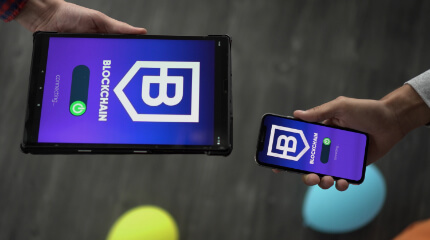
Is BlockChain Technology Worth The H ...
Unfolds The Revolutionary & Versatility Of Blockchain Technology ...

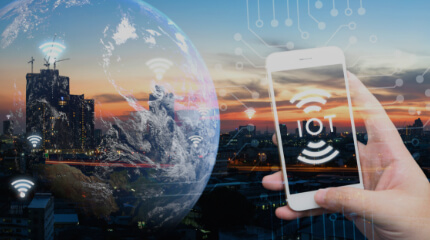
IoT Technology - A Future In Making ...
Everything You Need To Know About IoT Technology ...

Feel Free to Contact Us!
We would be happy to hear from you, please fill in the form below or mail us your requirements on info@hyperlinkinfosystem.com
Hyperlink InfoSystem Bring Transformation For Global Businesses
Starting from listening to your business problems to delivering accurate solutions; we make sure to follow industry-specific standards and combine them with our technical knowledge, development expertise, and extensive research.
4500+
Apps Developed
1200+
Developers
2200+
Websites Designed
140+
Games Developed
120+
AI & IoT Solutions
2700+
Happy Clients
120+
Salesforce Solutions

40+
Data Science












